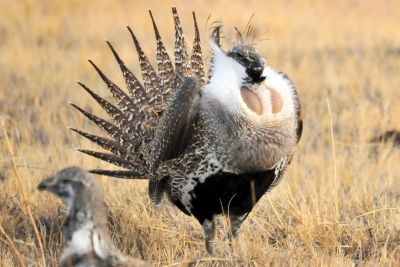
The greater sage grouse lives in North America. It is the largest species of grouse in that continent. It is a massive white-breasted bird with brown-black features on its head and back. The male has two yellow sacs on each side of the throat. In breeding season, the male inflates the sacs to amplify the pooping sounds it makes to lure the females. All the males gather in a spot called a lek and strut their stuff. They can be heard up to five kilometres away!
Other birds, such as the magnificent frigatebird and the great bustard also inflate their throat sacs called gular pouches. The frigatebird has a striking red one and it spends an hour inflating it.
Picture Credit : Google












 The common myna and the bank myna are different in many ways. The common myna is comparatively larger with a brownish purple plumage. It has a black head. But the bank myna is smaller and bluish-grey in colour. It has some bare skin behind its eyes, which is brick red in colour. In the common myna, this skin is yellowish.
The common myna and the bank myna are different in many ways. The common myna is comparatively larger with a brownish purple plumage. It has a black head. But the bank myna is smaller and bluish-grey in colour. It has some bare skin behind its eyes, which is brick red in colour. In the common myna, this skin is yellowish.